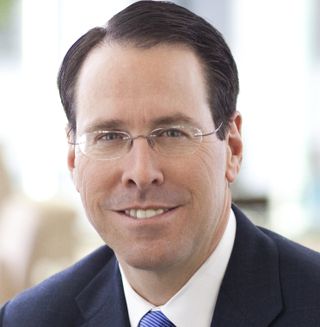AT&T-Time Warner: Promises to Keep
For AT&T and Time Warner, now comes the hard part.

In the months leading toward U.S. District Court Judge Richard Leon’s rejection of the federal government’s attempt to block the AT&T-Time Warner merger, both companies made a lot of promises. Now, with the $108.7 billion deal having closed last Thursday (June 14), they will have to make good on them.
On June 12, Judge Leon rejected the U.S. Department of Justice’s claims that the deal was anticompetitive, calling into question the DOJ’s math and its assertions that the combined company would restrict access to programming or raise prices.
He also attempted to nip any thoughts by the government of appealing his decision, adding any moves toward a stay would “cause irreparable harm to the defendants in general and AT&T in specific” and would be a “manifestly unjust outcome of this case.” The DOJ agreed, but still has the right to appeal.
Related: AT&T, Time Warner Cleared to Merge
Agreeing to Arbitration
Though Judge Leon imposed no conditions on the deal, AT&T and Time Warner pledged a few things they hoped would smooth the approval path. Perhaps the pledge with the biggest impact across the industry was the promise to offer “baseball-style” arbitration in carriage disputes between its networks, such as TNT, TBS, CNN and Cartoon Network, and other distributors.
Multichannel Newsletter
The smarter way to stay on top of the multichannel video marketplace. Sign up below.
In baseball-style arbitration, a third party arbitrator receives sealed proposals from both parties in the dispute, and after a hearing selects one of those proposals without modification. During the arbitration period, no networks could be blacked out.
AT&T-Time Warner had promised to extend the arbitration offer for seven years after the deal closed. According to AT&T, the arbitration offer still stands.
The American Cable Association, which was against the merger, said although the arbitration offer is flawed — it doesn’t include HBO — it is an essential part of the deal.
“If there is any saving grace in the Court’s opinion, it is that the Court recognized that the offer made by AT&T-Time Warner (via Turner Broadcasting) to agree to commercial arbitration to settle program access disputes ‘will have real-world effects,’ helping to prevent ‘new’ AT&T from raising prices to its rivals,” the ACA said in a statement.
AT&T made some other promises for after the deal closing, including launching a sports-free video bundle that will cost $15 per month for non-wireless customers, but will be free to AT&T Wireless subscribers with unlimited data plans. AT&T chairman and CEO Randall Stephenson said the service, called AT&T Watch, would include Turner channels and others, but would only come to life if the Time Warner merger were approved.
AT&T also promised to offer a broadband-delivered DirecTV product, priced at between $80 and $90 per month, but details on that product were sketchy. Still, analysts saw AT&T Watch — and the telco’s aggressive discounting strategies (wireless customers get the $35 DirecTV Now package for $10 per month) — as a critical look into how AT&T views the content business going forward.
Related: AT&T to Introduce Broadband-Delivered OTT DirecTV Product
Bundles and Other Promises
In a blog titled “AT&T Wants to Give Video Away for Free,” BTIG Media analyst Rich Greenfield wrote that creating another sports-free bundle is nothing new.
“What makes AT&T Watch so significant is that AT&T is planning to give this package of video channels to AT&T wireless unlimited plan subscribers at no cost,” Greenfield wrote, adding that with an estimated 15 million AT&T Wireless customers on unlimited data plans, uptake should be high.
All of these moves appear to be in line with what Stephenson has been saying all along — the days of high-priced, fat packages of linear TV are over.
“If you’d asked me seven years ago what this world would look like today, I would have missed it so far,” Stephenson said during the April DOJ trial, according to a court transcript. “The need for people, for content creators, to go through cable companies and satellite companies to get their content to the consumer, that is a thing of the past.”
